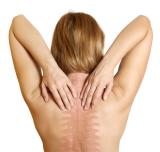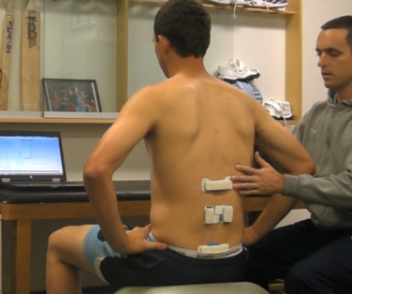Sensors to Assess and Treat Back Pain

Although most of us seem to suffer from back pain at some time, we are all different shapes and sizes with different lifestyles and the cause of pain will vary significantly from patient to patient. It is therefore ideal to be able to accurately assess the clinical significance of each individual patient prior to recommending a treatment. Furthermore, without a thorough assessment of spine and muscle motion there is a risk that a 'one size fits all' back pain treatment can do more harm than good. The ideal recommended treatment is one that is both appropriate and precisely tailored to the individual and their lifestyle.
Diagnosing Individual Back Pain Differences
To thoroughly, accurately and objectively be able to assess each patient without technical assistance is not always easy, it can take a lot of time and is often at risk of subjective interpretation. A medical device company (dorsaVi) have therefore designed and produced highly sophistacted, wearable sensors that allow specialist clinicians to precisely assess whether movement and muscle activity patterns are contributing to spine and back conditions.
The sensors are wearable and attached to the back, the clinician instructs the patients to perform a series of movements, and these motions plus associated muscle activity are tracked and monitored. The results from this scientific and biomechanical assessment combined with more traditional observations provides specialist back pain consultants such as the Harley Street Sports Medicine Physician, Mr Ralph Rogers with the required objectivity and insight. This allows a highly personalised treatment plan to be prepared.
What is the right back pain treatment for me?
Patients can be assessed through a set of movements or exercises performed in-clinic, or outside the clinic, at home or at work, where the ViMove can monitor their everyday activities, and provide immediate biofeedback to the patient and a concise report for the healthcare practitioner.
Identifying back pain issues that are unique to each and every patient
The creator of ViMove is physiotherapist Andrew Ronchi who says dorsaVi’s technology is changing the way healthcare professionals diagnose and treat patients with lower back pain and other musculoskeletal conditions. He says, “ViMove eliminates the guesswork from clinical assessments by providing healthcare professionals with more timely, accurate and objective data than ever before.” He goes on to say, “This device allows clinicians to accurately assess a patient’s condition and create individualised treatments programs and monitor their effectiveness,”
Visual biofeedback creates a clearer picture for clinicians and helps them to illustrate the problem to their patients and actively engage them in the management of their back pain. Using a PC or tablet, clinicians can show patients how they are moving in real time, and train them to understand the right posture and movement patterns that are necessary to reduce pain.
Personalised Back Pain Rehabilitation Programs
For treatment to be effective, clinicians rely on patients to follow their rehabilitation program in between visits, carrying out the right movements and exercises at home, at work or in the gym. Many patients find it difficult to remember a prescribed set of movements and exercises, and ensure they are carrying out their rehabilitation effectively.
If patients have poor technique, especially with increasing repetitions, or cannot replicate postural change shown in the clinic, their rehabilitation program will less be effective, leading to a slower recovery and more clinic visits. ViMove’s wearable capabilities mean the device can also be used outside the clinic, for up to 24 hours, to help patients monitor their rehabilitation and ensure they are carrying out all movements and exercises correctly. Fitted with movement sensors, patients have access to a pocket-size handheld device which receives messages and alerts them if they are moving incorrectly. The device helps patients identify and correct their posture and/or movement.
Patient Case
Bob Laybourne, a patient who suffered from years of chronic back pain to the point where he was unable to carry out everyday activities such as collecting the mail. Even showering and going to the bathroom became difficult without the help of an aid. Mr Laybourne had tried everything from anti-inflammatory medication to acupuncture but it was ViMove that helped him understand his condition and correct his posture during everyday activities.
“ViMove taught me how to stand, how to walk and how to position myself when sitting or getting in and out of the car,” said Mr Laybourne. “ViMove made me feel secure in that if I was overstretching or overreaching the device would alert me to the fact I was pushing myself too far. It has been just over two years since I was treated with ViMove and I am completely pain free. I sleep well, live well, am able to lift heavy objects and help my son with his footy training, and I wake up the next morning pain free,”









